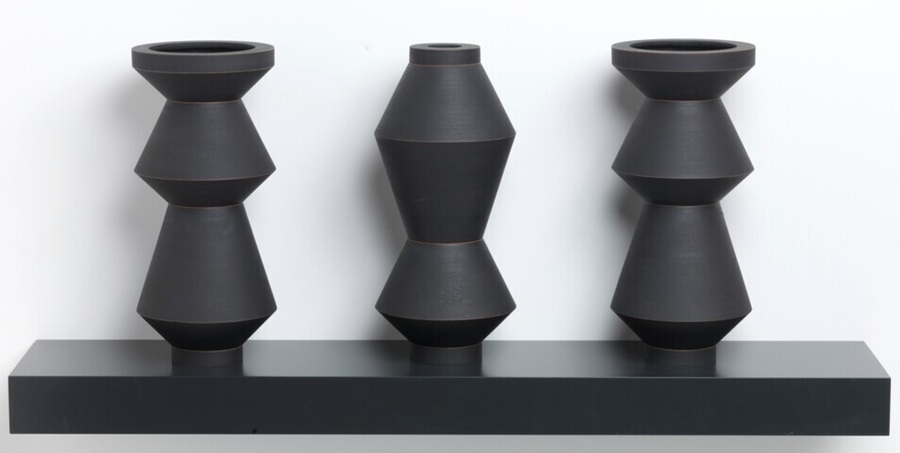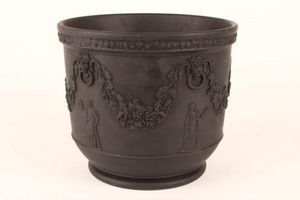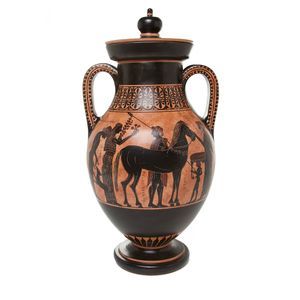User:0960620
RESEARCH
I started off using this artifact as the beginning of my research. I was drawn to it's geometry, symmetry and the way that the matt, black objects interacted with the negative white space inbetween them, to not just make 3 forms but 5.
Further research led me to the fact that the ceramicist, Martin Smith, was heavily intereseted in architecture (hence the perfect geometry of his work) and new technology in ceramics. This particular piece, "Triptych in the form of Vase no. 1", is a deconstruction of the forms of the plate, the bowl and the vase; combining the seperate forms into three conglomerate sculptures, he explores how abstract he can make these parts.
The forms were also inspired by Wedgewood Black, a matt-black ceramic look popularised by the company Wedgewood, and vases from Greek antiquity, distinct in their terracotta with black glaze and their narrative style. These forms tell a new narrative. The hint of terracotta at the seams of the forms reminds the viewer these are not just sculptures, different though they are from the archetypal ceramic object, they are still inspired and grounded in ceramic history. These ideas gave me a lot to work with in terms of the context of my artifact.
My initial research into Martin Smith, his work, and my chosen artefact turned up lots of useful quotes:
- "the formal language of the vessel and the way that it can both contain a space and define a place”
- (Smith uses) "...elements of architectural language and uses ‘poetic geometry’"
- “abstractions of domestic wares”
- "Pots always reference architecture in defining space, containing, and making space useful; these small pieces have an strong architectural quality about them"
- "These new tripartite vases are improvisations and deconstructions of a number of vase types, built around a basic square grid and grouped in threes, consisting of a pair framing a single form. Although only three black ceramic objects are there in front of you, there could be seen to be two other more elusive ones, implied by the spaces in between them. These forms are tightly grouped on shelves at such a height that their top surfaces are just out of sight – they could from this viewpoint therefore be hollow perhaps, or solid."


